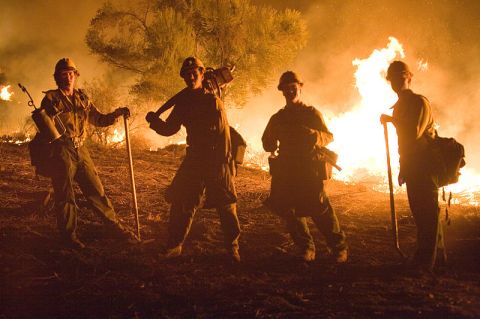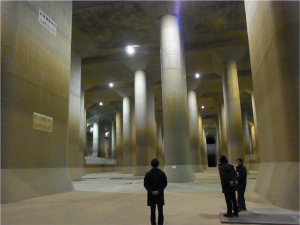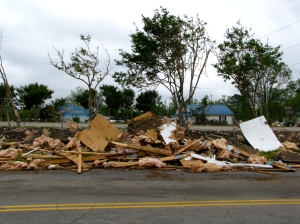Category Archives: disaster management
US-Dutch Flood Resilience Partnerships
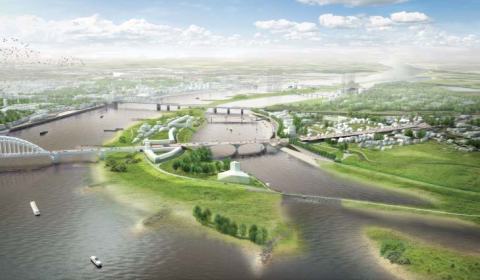
When Hurricane Katrina hit cities across the country, the US government looked for ways to tap the expertise and experience of other cities that had dealt with similar disasters. The US identified the Dutch as having valuable advanced skills and knowledge. Partnerships with individual cities were encouraged. Matthew Willner, MCP’16 explored the gains and losses to both sides associated with these partnerships. Through interviews, with both Dutch and American officials, Matthew sought to verify his concern that the underlying goals of policy transfer partnerships are not always obvious.
Do you think that international efforts to share or transfer policy ideas are always a good idea?
You can download Matt’s thesis to read about his findings here.
What Are The Best Ways For Big Coastal Cities In Asia To Protect Themselves Against Flooding?
Managing the impacts of climate change is no longer a concern of the future, but a significant reality of the present – especially for coastal megacities in Asia where flood management is a pressing concern. In order for big coastal cities in Asia to better protect themselves against floods, Shoko Takemoto argues that it is important to closely examine how cities are already managing climate vulnerability and change, what factors shape their approach, and how climate change adaptation can fit within their actions and perceptions towards future planning. Given the recent Great East Japan Earthquake and other natural disasters, asking the question of what cities are adapting to, and why they are adapting could be the necessary first steps for enabling cities to become climate-smart.
Takemoto examines how two coastal megacities, Bangkok and Tokyo, are currently dealing with changing climate and weather patterns, and what factors shape their responses. He finds that, despite their significant differences in socioeconomic conditions, Bangkok and Tokyo’s flood management efforts are surprisingly similar. He also finds that whether a city is developed or developing may not necessarily influence existing capacities for flood management or climate-adapted systems.
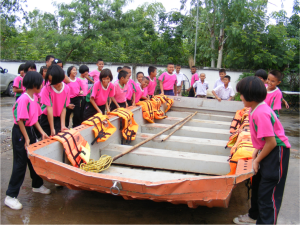
Flood response exercises with school children in Thailand.
(Photo credit: Asian Disaster Preparedness Center)
Bangkok and Tokyo do, however, have very different perceptions of their respective challenges and priorities for future flood management. In the case of Bangkok, the non-climatic issues of improving urban planning and watershed management need to be tackled simultaneously with dealing with the potential impacts of climate change. For Tokyo, because they already have established urban planning and watershed management systems, figuring out how to manage future climate risks and create a methodology to deal with uncertainty within long-term planning are the key challenges.
You can learn more about this topic by reading the full thesis, “Moving Towards Climate-smart Flood Management in Bangkok and Tokyo,” written by Shoko Takemoto.
How is Technology Being Used to Improve Disaster Management in U.S. Cities?
The rapid development of modern technology has increased access to and reliance on sophisticated communication and real time technology. These technologies, which have become embedded within everyday life, have significant implications for government agencies – particularly within the field of disaster management. How are cities currently using technology in their disaster management? In understanding what cities are using, what are the most important factors in adopting new technology? Can future technology developments help address the needs of emergency managers?
To answer these questions, this thesis draws on the evolution of disaster research, the history of disaster management in the US, literature on emerging uses of social media technology, and interviews from 24 emergency management offices throughout the US. The analysis reveals several conclusions. First, cities are using a variety of communication, data management, and simulation technologies, primarily within the preparedness and response phases of the disaster cycle. Although many cities are operating on web-based platforms and using social media, this use is generally as a one-way broadcasting system rather than as a bi-directional exchange allowing the gathering of crowdsourced information.
Cities are also facing a variety of challenges for adopting new technology, including funding, political support, and legal constraints. When combined with general interoperability challenges, shifting government-public relations and increasingly mobile populations, it is clear that future technology developments and legislation must work to address these issues. Through the use of open standards and strengthened data integration, cities may be able to both focus on and better leverage both existing and new forms of communication to build the level of trust needed to both reduce vulnerability and increase resilience.
You can learn more about this topic by reading the full thesis,“Evolving Technologies for Disaster Management in U.S. Cities,” written by Vanessa Ng.
